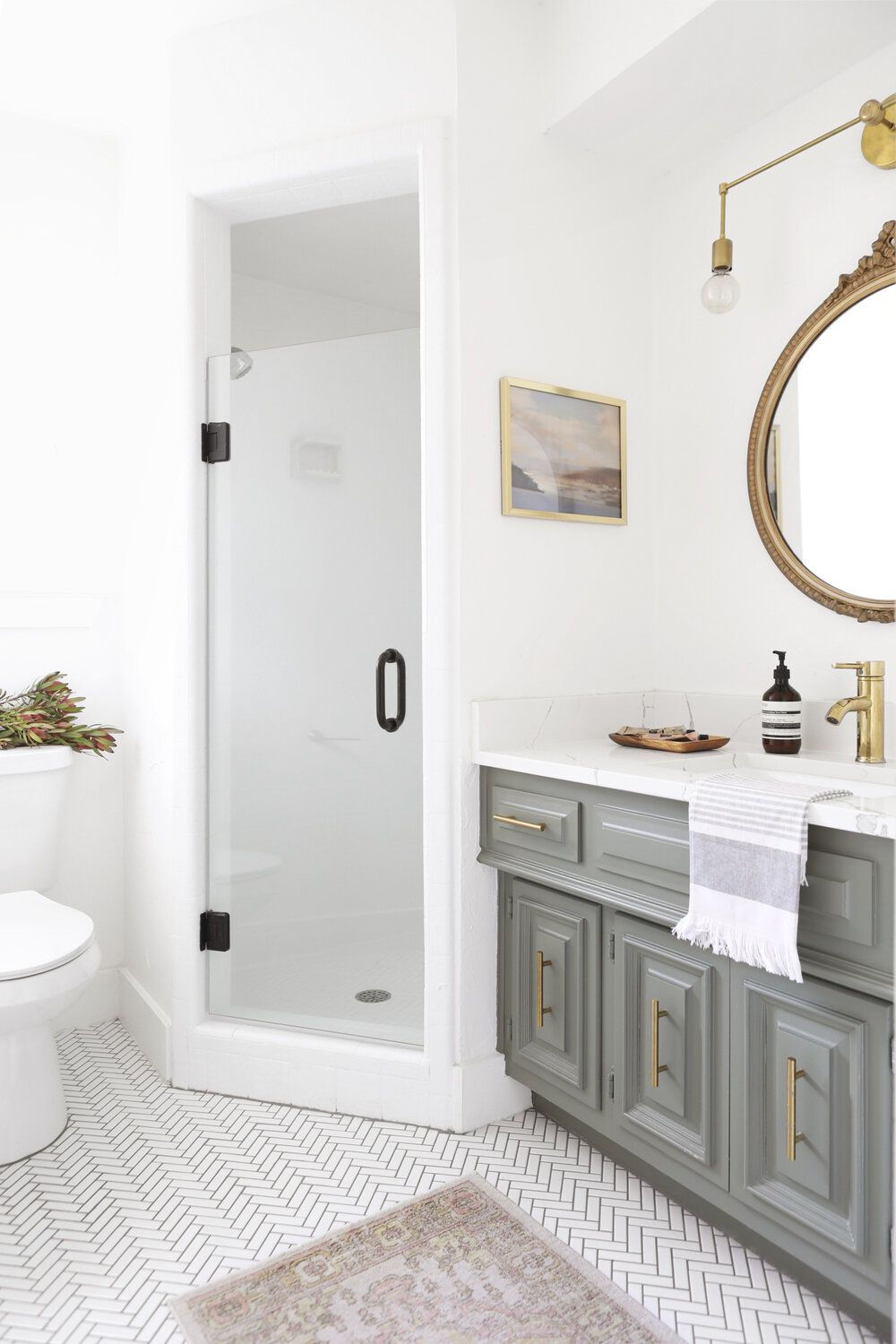How to Clean Glass Surfaces Throughout Your Home
Glass is ubiquitous in our homes, from the practical to the ornate. And whether it’s simple windows or a designer coffee table, they all can be plagued by the same problem: how easily they get dirty.
Quality glass can last for years, but that doesn’t stop fingerprints and smudges from showing up. Keeping glass sparkling is also one of the easiest ways to quickly make your whole space look cleaner—light filtered through newly-cleaned glass can make a whole room sparkle.
Thankfully, cleaning glass doesn’t have to be a difficult chore, and no matter where the glass is in your house, you can use many of the same common products and ingredients to keep it shining. Read on for the best ways to clean glass throughout your home.
How Often Should You Clean Glass?
Depending on the type of glass surface in your home, there are different recommended cleaning schedules.
- Windows: Window washing is recommended every 6 months to keep them clean.
- Glass shower doors: You should squeegee your glass shower door after every single use, as this will help avoid streaks and prevent the buildup of soap scum.
- Tables or other high-touch surfaces: Give these a daily wipe, especially if they are in the kitchen or bathroom.
- Glass stovetop: Wipe down after each use.
Things You’ll Need:
- Vinegar
- Rubbing alcohol
- Spray bottle
- Baking soda
- Lint-free cloth
- Glass cleaner (optional)
- Squeegee (optional)
For Cleaning Glass Windows and Doors:
Glass windows and doors provide much-needed natural light to a room. But, telltale smudges and streaks can be unsightly and even make a room feel less bright. To clean a window, you can either use a glass cleaner or a DIY mixture of one cup water, one cup rubbing alcohol, and one tablespoon vinegar. This cheap alternative will help break up greasy residue and dry quickly, leaving behind fewer streaks.
Step 1: Spot-Clean Glass With Solution
If you are just spot-cleaning, spray the solution on the offending spot and wipe clean with a lint-free cloth (microfiber is great for this). Continue wiping until the solution is fully dried—this helps reduce any streaks left behind. Other options include old t-shirts or even newsprint, as paper towels will often leave behind fuzz. If you want a more convenient option, look for shop towels or paper towels that specifically are treated to be lint-free.
Step 2: Wipe Entire Surface With Solution
To more thoroughly clean your glass, the method is much the same: spray and wipe down. Start high and move downward to avoid leaving behind drips.
To really prevent streaks, you can also use a squeegee, which quickly removes any remaining cleaner. Just keep in mind that, if you’re cleaning inside, the squeegee will direct any liquid towards your floors.
Step 3: Hire a Professional Biannually
While cleaning windows seems fairly simple, many homeowners opt for professional cleaning, ideally twice a year. Beyond just cleaning the glass, a good window cleaner will also clean blinds, shutters, and frames. Additionally, they will look for early signs of damage to window frames from bugs or decay. Professionals will also come armed with all the right equipment to safely clean higher windows and other hard-to-reach spots.

For Cleaning Glass Shower Doors:
Begone, moldy shower curtain. Glass shower doors provide a longer-lasting, more hygienic option. But like the rest of your bathroom, it can still be plagued by the same big offenders: soap scum, mineral build up, and mold. To keep the glass looking good, you should clean it whenever you clean the rest of your shower—about once a week.
Step 1: Mix a Simple Cleaning Solution
Look for a cleaner specifically designed to clean bathroom glass. You’ll want something a bit heavier duty for this particular area of the house. Or, you can DIY a solution as well: use 2 parts white vinegar and 1 part dish soap and shake it up.
Step 2: Spray on Doors
Let the solution sit for about 30 minutes, then use a sponge or microfiber cloth to wipe it down.
For more persistent messes, you can use a paste made from baking soda and liquid soap to gently buff it away. The baking soda won’t scratch the glass, but is abrasive enough to lift scum.
Step 3: Address Mineral Deposits If Necessary
If your bathroom glass looks clean but cloudy, you may be dealing with limescale or mineral deposits left behind by hard water. A vinegar solution will help remove limescale, but you can also consider buying a shower filter to help prevent build-up throughout your shower.
Step 4: Invest in a Squeegee and Wipe Daily
Finally, to clean less frequently, consider getting a squeegee for your shower. Run it down the shower door walls as well as the tile to keep water and soap from drying there. This isn’t just about pretty looks: while the squeegee immediately shines the glass, it also cuts down on wet areas where bacteria and mold can thrive. You can also keep a mild bathroom cleaner or vinegar and water solution in the shower to spray before you squeegee.

For Cleaning Glass Tables:
Glass tables are striking but particularly prone to fingerprints and stains. Most glass cleaners, like Windex, will work fine on glass tabletops as well. You can also use the same DIY cleaning solution as the windows.
Spray and Wipe—It’s That Easy
Simply spray and wipe down your table with a microfiber or lint-free cloth. The DIY solution is particularly good if the table has other materials, like wood, that might get spritzed. Mild soap and water, as well as a baking soda paste or Bar Keeper’s Friend, is also fine for caked-on spills or stains. For high traffic areas, you may also consider acrylic, which won’t stain or smudge as easily.

For Cleaning a Glass Stovetop:
Glass stovetops are often one of the most challenging surfaces to clean since spills and splatters can bake over over time.
Step 1: Wipe Daily to Prevent Messes
In a perfect world, the stovetop would be wiped down after use, once it has completely cooled. Since your kitchen clean-up may be done before that, you may be fine with spraying it down as part of your weekly cleaning. If you have especially bad stains or splashes from a messy dinner, you can also place a wet towel over the offending spot as the oven cools. Keeping it wet during the cooling process will hopefully help it loosen and not harden any further.
Step 2: Deep Clean Each Month
For deeper cleans (once a month or so, or as needed), spray with a vinegar solution like you would use on your windows and let sit. If something is really stuck, you can try a gentle abrasive like baking soda mixed with Dawn or Bar Keeper’s Friend. Avoid using abrasive sponges or metal scrubbers.

